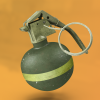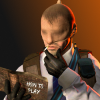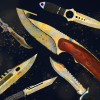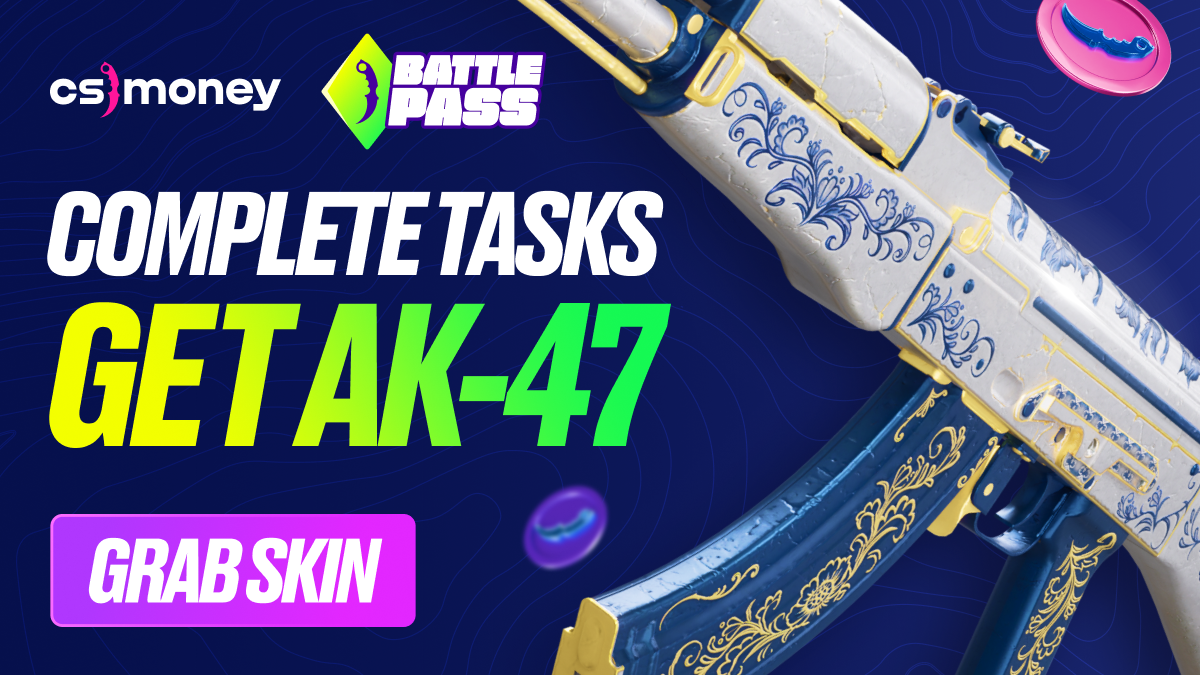Counter-Strike: Global Offensive is in the history books: Valve officially released its successor. However, the game will leave its mark in both esports and general gaming. It brought us numerous significant things and events, inventions and emotions of all kinds. Today, CS.MONEY Blog will talk about notable things CS:GO gave us.

First of all, CS:GO invented skins. And this is the most important innovation in the world of computer games! And just after the release of CS2, you can update your inventory on CS.MONEY Trade with prices are lower than Steam, numerous purchase options and a convenient filter system. Click and update now!
Majors, the main esports events
The community tends to criticize Valve. They say devs pick wrong skins for cases, don’t return old maps to the pool, or even give up on supporting the game. But there is always one super-solid counter-argument to this criticism: esports tournaments sponsored by Valve. They are called Majors, also known as the World Cups.
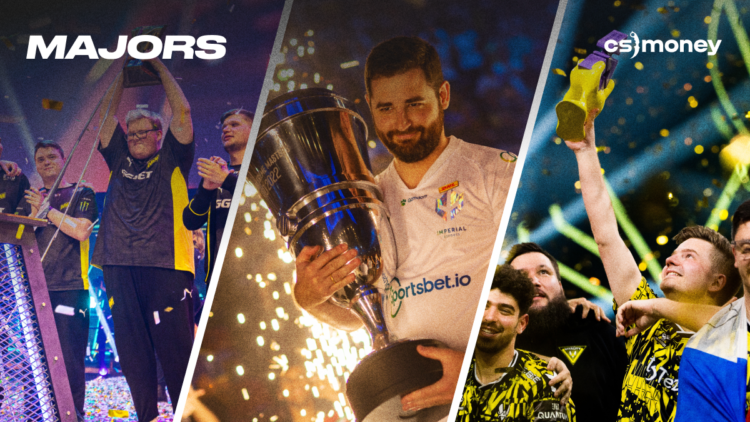
And it’s not only the sponsorship that is important. To be completely honest, Valve first started this with the original The International in Dota 2 which took place long before the first CS:GO Major, DreamHack Winter 2013. Valve’s tournaments are constantly evolving. The first Major had 16 teams, a GSL format in the Group Stage followed by the classic Playoffs. Moreover, all Group Stage matches were held on a single map; a team could leave towards the airport after only two lost maps. In 2023, we have 24 teams at Majors with three stages in total: Groups have the Swiss system instead of GSL, and the matches are Bo3. You can see the progress.
But we haven’t even talked about the most important aspect. Stickers. During the Major, stickers with the participating teams’ logos and the players’ autographs are added to the game. These stickers are both invaluable support for the teams’ financial health and valuable trading assets. The most expensive stickers, from the Katowice major in 2014, now cost more than $100,000. It’s definitely a landmark thing in the history of the CS series.
Skins, a handy customizational tool
Skins in the CS franchise have been around since the very early versions. Officially, these were different models for the attacking and defending teams. At the beginning of a match, players would choose a model for themselves and play as that character. Unofficially, players could replace files in the game to give their weapons a different appearance.

However, in Counter-Strike: Global Offensive, players gained a full-fledged opportunity to express their individuality. It all started with weapon skins and knives. Then came stickers, gloves, agents, graffiti, music kits, and other items. In general, you could create a unique look.
Valve, having learned from Team Fortress 2, did everything to allow players to trade skins, while these items had no impact on gameplay. This turned skins from a cosmetic item into an investment. Players could trade, sell, and buy skins. The most entrepreneurial players even made a profit from it. Skin traders turned their hobby into a source of income.
VAC, a fair protection system (almost)
Another significant thing that entered history along with CS:GO is the anti-cheat system. Valve Anti-Cheat, abbreviated as VAC, is interesting for two reasons. First, this anti-cheat even worked during tournaments and caught the highest-level pro players. This not only generated a wave of memes in the community but also ended players’ careers and proved once again that VAC works.

But here’s the catch: VAC doesn’t work. Well, it doesn’t work the way players want it to. Hundreds of thousands of accounts are banned yearly, but the problem with cheaters is still not solved. Valve added two helpers to VAC to combat dishonest players: Trust Factor and VACnet.
Trust Factor calculates the trustworthiness of players and is used in the matchmaking system. It’s a bit like a secret ban. Cheaters and toxic players are matched together, while decent and honest players are in a different pool. Trust Factor’s algorithms are hidden, so it does reasonably well in the fight against cheaters. VACnet, on the other hand, is a machine-learning system that analyzes players’ behaviour.
Ultimately, VAC and its helpers seem to be dealing with cheaters, but sometimes they don’t. There are still occasional stories of catching cheaters at tournaments or during Steam play. Not to mention the dishonest players in matchmaking. The ongoing battle of developers against cheaters has become a defining feature of CS:GO.
Scandals: Match-fixing and DMCA
Another thing that has accompanied CS:GO almost throughout its existence is various scandals. The story of M4A4 Howl is familiar to almost every CS player. Other “stolen” skins like AWP Doodle Lore, AK-47 Vulcan, M4A1-S Chantico’s Fire are little less known.
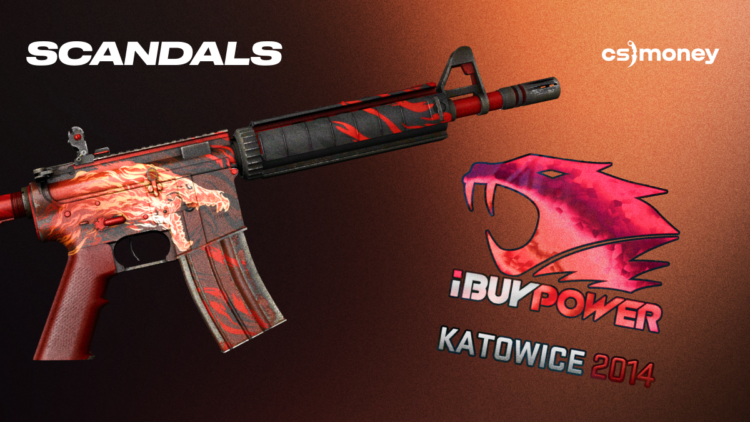
Scandals were not only related to copyright infringement. The list of hot events easily includes the match-fixing involving iBUYPOWER, the famous olof-boost on Overpass, and the use of word.exe by an Indian player with the nickname Forsaken. And this is just a brief list. Hardly a month goes by without another “coach camera bug” or some other reason to create drama and scandal.
More than ten years after the game’s release, CS:GO is still interesting to follow. The game’s community is still alive and even growing in size. In its final months of life, the game continued to break online records. Such a large community constantly finds new reasons to discuss their beloved game.
No extras: sticking to the base ideas
The latest, but not the least important thing missing in CS:GO. Its redundancy of non-necessary extras is truly iconic. As mentioned earlier, a few years before the release of CS:GO, Valve released Team Fortress 2. The game had very popular items that significantly changed the appearance of characters. This phenomenon was jokingly called the “hat economy” because the most popular customization item was hats.
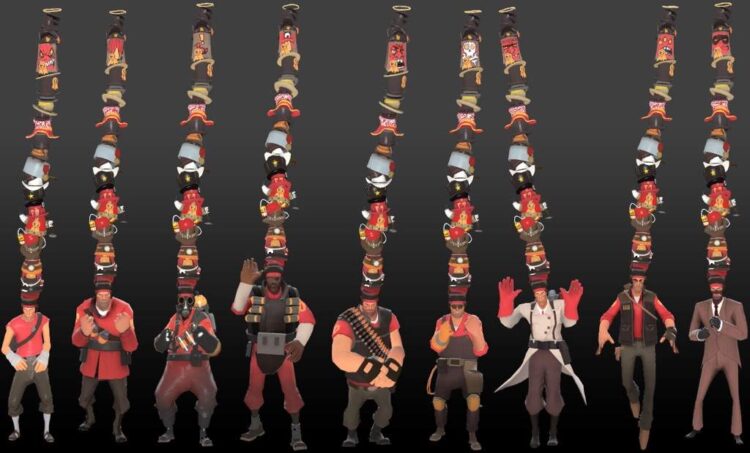
In the last decade, the gaming industry has come a long way in terms of customization and style. Games like Call of Duty: Black Ops II were released alongside CS: GO. It was a serious shooter with its own style. Camouflage, attachments, character designs – in terms of style, it was not immediately distinguishable from simulators. Now, you can play as an anthropomorphic cat in Call of Duty.
In a world with such vibrant games with insane customization like the Call of Duty or Fortnite, CS:GO surprisingly remains true to its style and game content. Skins have become more colourful, agents have acquired a more extravagant appearance, and some radio phrases are straight out of 80s B-movies. But all of this doesn’t detach CS:GO from its roots in reality.
More importantly, Valve didn’t follow trends or add various “buttons”, like hero abilities from games like Valorant or APEX Legends. CS:GO, like the Counter-Strike series before it, requires skill from players, not just the correct choice of the “legend” or “hero.” CS, being an easy-to-learn, hard-to-master game, is truly a defining feature that emphasizes the genius and simplicity of the Counter-Strike gameplay.
And what is the iconic thing related to CS:GO for you? Please share it in the comments!


